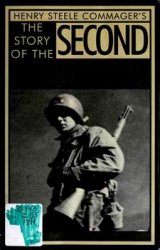The plan called for 6th Airborne Division to drop between the rivers Orne and Dives, so as to cover the flank of the landings at SwordV>c2ich.. Unlike his American counterparts, the flamboyant Maj. Gen. Richard (“Windy”) Gale of 6th Airborne Division planned to use his men like airborne commandos, in small parties to take specific objectives. “What you get by stealth and guts,” he told them, “you must hold by skill and determination.” In order to secure their objectives before the first amphibious landings, the airborne forces would land by night, relying on darkness to hide their numbers and confuse the Germans. Night landings carried a high risk of failure, and Gale depended on the training of his men to carry his plan through.
On June 6, at a few minutes after midnight, high over the Normandy coast, the British liberation of France began as the first of Gales men, 181 assault troops in six gliders under Maj. John Howard of 2nd Oxfordshire and Buckinghamshire Light Infantry (the “Ox and Bucks”), cast off their tow ropes and began the silent glide down to land. Their target was the bridges at Benouville over the Canal de Caen and the Orne, the only bridges between Caen and the sea, guarded by about fifty German troops and wired for demolition. Gale wanted these bridges intact, as the link between his division and the commandos landing at Sword.
At 00:16, Howards lead glider skidded to a halt only yards from the Canal de Caen Bridge, probably the first Allied troops to land in Normandy on D-Day, followed seconds later by two other gliders. Bombing of the area by the RAF had already started, and the bridges defenders hardly noticed the dark shapes of the gliders until Howard’s men burst from them, guns blazing. In 10 minutes it was all over, and for the loss of two men dead and five wounded the British had captured the bridge intact. Although it was wired for demolition, the Germans had not yet placed the explosives. At the same time two more of Howard’s gliders, coming down by the Orne Bridge, discovered that its defenders had fled. The sixth glider missed the target altogether, landing beside a bridge over the Dives.
While the glider troops dug themselves in around the bridges, the main airborne drop had already begun, and within an hour the first paratroopers of 5th Parachute Brigade arrived. Throughout the night there were sharp fire fights as Germans drove up out of the dark, only to find the bridges blocked. By morning the defenders had fought off more than one attack by tanks, and the batde swung back and forth as more airborne troops joined in. Finally, at just after noon, the men on the bridges heard the distinctive sound of bagpipes, heralding the arrival of reinforcements from 1st Special Service (Commando) Brigade under Lord Lovat, coming from Sword Beach. In honour of the “Pegasus” divisional insignia of British airborne troops, the Canal de Caen Bridge was later renamed Pegasus Bridge.
Gale’s other main target for the night was a well-defended German gun battery position at Merville, across the Orne estuary from Sword. The silencing of this battery was entrusted to Lt. Col. Terence Otway of 9th Parachute Regiment, who devised an elaborate plan involving the bombing of the German battery by the RAF, support from Canadian paratroops with special equipment, the storming of the battery by his own battalion accompanied by a simultaneous glider landing, and a final bombardment from British warships just as dawn broke. In the confusion of the night this plan broke down completely. The RAF bombers missed the battery, nearly killing Otway’s advance party instead. Only just over 150 men reached the rendezvous in time for the attack, and litde of the special equipment arrived. Clearing their way through a minefield protecting the battery, the paratroops launched their attack at 04:30. Just as they did so, two of the expected gliders flew over the battery, missed it entirely, and crashed nearby. To this accompaniment, Otway’s men stormed the banery casemates, driving the Germans back and taking 30 prisoners, but in the smoke and darkness underground failed to realize that they had only damaged, and not disabled, the four 100mm guns. With dawn coming up and nearly half his men killed, wounded or missing, Otway pulled his force back from the battery, having achieved his objective of silencing it for D-Day.
Throughout the night, the paratroops and gliders continued to land, roughly half of them where the plan intended and the rest scattered between the Dives and the sea. Small parties of men, largely from 3rd Parachute Brigade, succeeded in destroying the five bridges over the Dives next to their landing area, so sealing off the landing from serious German interference. Others became lost and were taken prisoner, or fought with equally lost German patrols. Soon after dawn. Gale, who had established his headquarters near Pegasus Bridge, could feel confident that his division had achieved its objectives, and with daylight the main glider force of 6th Airlanding Brigade could start its landings. Any Germans trying to reach Sword Beach across Pegasus Bridge would find their way securely blocked.




 World History
World History









